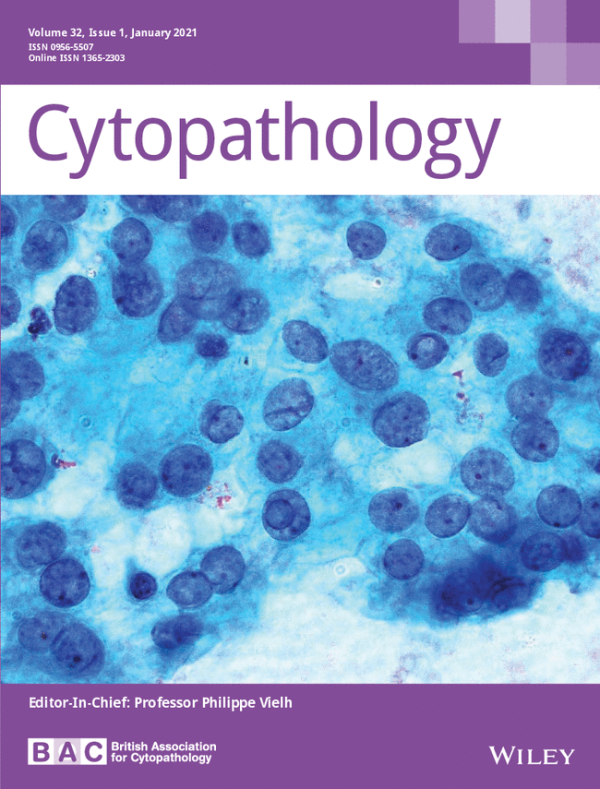Happy New Year from Cytopathology!
Read MoreThe January Edition of Cytopathology (Vol 32, issue 1) is now available to review online with print copies to follow.
The issue opens with a welcome and introductory Editorial by new Editor-in-Chief, Dr Philippe Vielh who gives an outline of his professional background and his aspirations for the journal going forward.
In the first of 13 original articles in this month’s issue, Koster et al, propose a system for reporting soft tissue Cytopathology, following their evaluation of fine needle aspiration cytology and core needle biopsies in a large series of primary soft tissue and bone lesions. Continuing the soft tissue theme, the paper by Rekhi et al provides a comprehensive analysis of the cytomorphological spectrum of alveolar soft part sarcomas.
Several articles focussing on the reporting of thyroid FNAs follow. In their interesting study, Van der Horst et al compare the histological outcomes of the UK category of Thy 3a and suggest a subclassification to improve risk stratification. Ravella et al show how, in indeterminate FNAs, analysis of nuclear features may identify nodules that do not require surgery. Borges et al point out that the challenges of FNA in thyroid lesions <1cm, lead to a higher frequency of non-diagnostic and suspicious for malignancy Bethesda categories.
Two articles, by Ardengh et al and by Singh et al, highlight the value of cell blocks and immunohistochemistry in making the diagnosis of solid pseudopapillary neoplasm of the pancreas.
The next two papers address topics in gynaecological cytology that many cytopathologists might be less familiar with - endometrial brush liquid-based cytology by Norimatsu et al and gastrointestinal type cervical adenocarcinoma by Greenland et al.
The original articles this month also includes several informative papers focussing on technical aspects in cytology: Kirbis et al demonstrate how cell morphology and immunoreactivity for biomarker immunohistochemistry is retained on methanol-fixed cytospins protected with polyethylene glycol; Jayakumar et al describe an effective microwave technique for producing rapid cell blocks; Song and Jalaly present interesting findings showing that P16 positivity cut off levels are lower in cell blocks than in corresponding tissue sections.
Finally, a novel study by Martínez-Girón and Pantanowitz investigates the significance of corpora amylacea in sputum samples, finding that they are age related and associated with benign pulmonary disease
This month’s fascinating case reports include cases of solitary fibrous tumour of the lacrimal sac, CIC-DUX-positive sarcoma and a combined large cell neuroendocrine carcinoma and spindle cell carcinoma of the lung. The issue also boasts four short Enigma portal quizzes to test your knowledge on diverse cytological entities and Correspondence highlights a diagnostic pitfall in interpreting lung immunocytochemistry.
Don’t forget, new articles are available on the Cytopathology website for “Early View” before they appear in print.
Cytopathology welcomes submission of high quality original articles relating to those aspects of cytology which increase our knowledge and understanding of the aetiology, diagnosis and management of human disease (full instructions on the website). Central to publication of high quality papers is the peer review process. If you are interested in assisting our journal by reviewing manuscripts please contact either the BAC or the Cytopathology office

